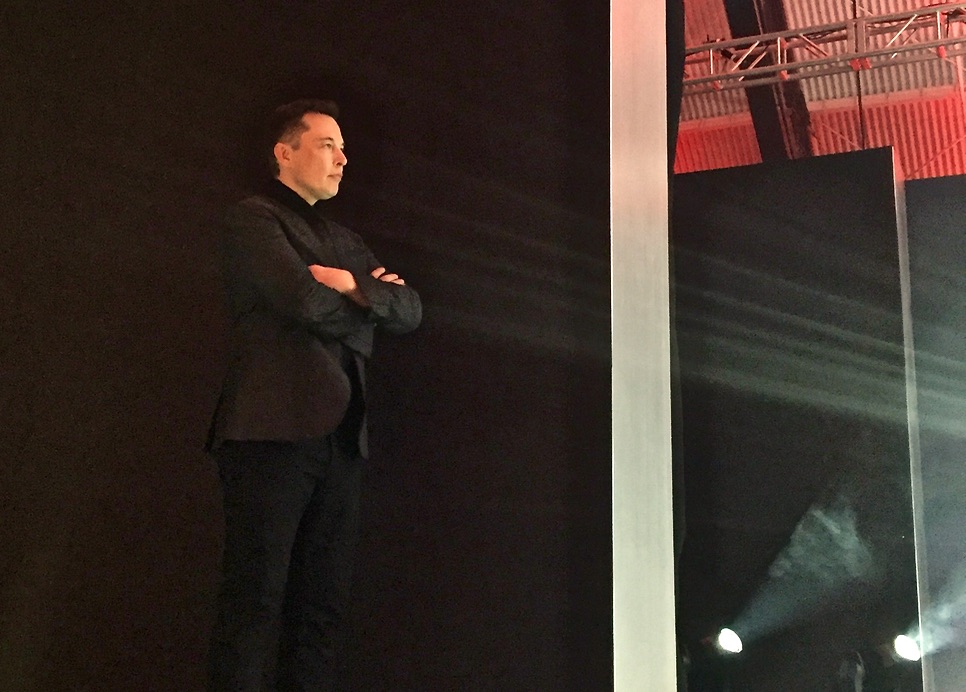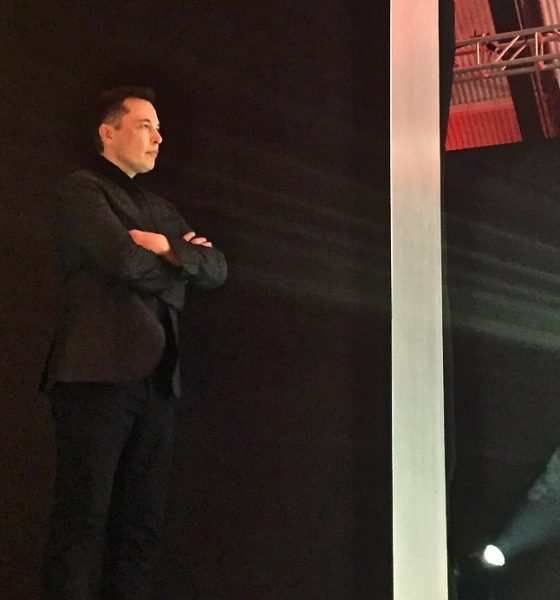

News
Elon Musk’s OpenAI increases hiring efforts in push to build safe AI
OpenAI, the non-profit artificial intelligence research firm co-chaired by Tesla CEO Elon Musk and Y Combinator president Sam Altman, appears to be preparing for an expansion. In a recent post on Twitter, the research company announced that it is actively looking for a full-time Recruiting Coordinator who will be based in San Francisco, CA. The person that would be hired will aid OpenAI in growing the company’s team, from hiring to the onboarding process for new employees.
The artificial intelligence company’s announcement follows a long silence on Twitter. Prior to the recent job posting, OpenAI’s official account in the microblogging platform posted its last update back in early December 2017. What is rather interesting, however, is that signs of OpenAI’s impending ramp-up could be seen on its social media page since last year, with the firm announcing an opening for a Machine Learning Fellow post last November. Considering that the company is now looking for a recruitment officer, it seems safe to infer that OpenAI is preparing to start expanding its reach.
Want to help grow the OpenAI team? We're hiring a recruiting coordinator: https://t.co/bqQcn4CHk4. Passion about beneficial AI and attention to detail more important than experience.
— OpenAI (@OpenAI) January 11, 2018
The artificial intelligence company was founded in 2015 on the principles of developing AI that is innately friendly to human development, as well as smart technologies that would benefit humanity as a whole. Since OpenAI’s conception, its patents and research have been open to the public, which Musk and his partners in the project hope would help usher in the era of a peaceful human-A.I. existence.
Musk has been pretty vocal about his reservations on the emergence of hyper-intelligent A.I. technologies. Taking a similar stance as world-renowned theoretical physicist Stephen Hawking, Musk described A.I. as humanity’s most significant existential threat and a possible cause for the end of human civilization as a whole.
In a lot of ways, Musk’s views on artificial intelligence are well-founded. Efforts in the A.I. industry over the past few years, after all, have proven that intelligent technologies tend to act and evolve in a rather unpredictable manner. Microsoft’s previous attempt at introducing an A.I.-powered chatbot on social media, for one, ended in a well-publicized failure. Back in 2016, the Redmond-based tech giant launched Tay, an A.I.-powered chatbot on Twitter, and within 24 hours, the bot learned how to spew out aggressive, anti-semitic statements. Tay was promptly retired.
Over the past couple of years, OpenAI has managed to gain a lot of ground in the artificial intelligence scene. Just last year, the research firm was able to develop bots that are capable of creating their own language. Not long after that, the company was able to create a bot that ultimately defeated a world-class DOTA 2 player. The research firm was also able to develop and release a couple of valuable platforms for A.I. initiatives — OpenAI Gym, which is aimed at reinforcement learning, and Universe, a training algorithm for intelligent technologies.

News
Tesla FSD fleet is nearing 7 billion total miles, including 2.5 billion city miles
As can be seen on Tesla’s official FSD webpage, vehicles equipped with the system have now navigated over 6.99 billion miles.

Tesla’s Full Self-Driving (Supervised) fleet is closing in on almost 7 billion total miles driven, as per data posted by the company on its official FSD webpage.
These figures hint at the massive scale of data fueling Tesla’s rapid FSD improvements, which have been quite notable as of late.
FSD mileage milestones
As can be seen on Tesla’s official FSD webpage, vehicles equipped with the system have now navigated over 6.99 billion miles. Tesla owner and avid FSD tester Whole Mars Catalog also shared a screenshot indicating that from the nearly 7 billion miles traveled by the FSD fleet, more than 2.5 billion miles were driven inside cities.
City miles are particularly valuable for complex urban scenarios like unprotected turns, pedestrian interactions, and traffic lights. This is also the difference-maker for FSD, as only complex solutions, such as Waymo’s self-driving taxis, operate similarly on inner-city streets. And even then, incidents such as the San Francisco blackouts have proven challenging for sensor-rich vehicles like Waymos.
Tesla’s data edge
Tesla has a number of advantages in the autonomous vehicle sector, one of which is the size of its fleet and the number of vehicles training FSD on real-world roads. Tesla’s nearly 7 billion FSD miles then allow the company to roll out updates that make its vehicles behave like they are being driven by experienced drivers, even if they are operating on their own.
So notable are Tesla’s improvements to FSD that NVIDIA Director of Robotics Jim Fan, after experiencing FSD v14, noted that the system is the first AI that passes what he described as a “Physical Turing Test.”
“Despite knowing exactly how robot learning works, I still find it magical watching the steering wheel turn by itself. First it feels surreal, next it becomes routine. Then, like the smartphone, taking it away actively hurts. This is how humanity gets rewired and glued to god-like technologies,” Fan wrote in a post on X.
News
Tesla starts showing how FSD will change lives in Europe
Local officials tested the system on narrow country roads and were impressed by FSD’s smooth, human-like driving, with some calling the service a game-changer for everyday life in areas that are far from urban centers.

Tesla has launched Europe’s first public shuttle service using Full Self-Driving (Supervised) in the rural Eifelkreis Bitburg-Prüm region of Germany, demonstrating how the technology can restore independence and mobility for people who struggle with limited transport options.
Local officials tested the system on narrow country roads and were impressed by FSD’s smooth, human-like driving, with some calling the service a game-changer for everyday life in areas that are far from urban centers.
Officials see real impact on rural residents
Arzfeld Mayor Johannes Kuhl and District Administrator Andreas Kruppert personally tested the Tesla shuttle service. This allowed them to see just how well FSD navigated winding lanes and rural roads confidently. Kruppert said, “Autonomous driving sounds like science fiction to many, but we simply see here that it works totally well in rural regions too.” Kuhl, for his part, also noted that FSD “feels like a very experienced driver.”
The pilot complements the area’s “Citizen Bus” program, which provides on-demand rides for elderly residents who can no longer drive themselves. Tesla Europe shared a video of a demonstration of the service, highlighting how FSD gives people their freedom back, even in places where public transport is not as prevalent.
What the Ministry for Economic Affairs and Transport says
Rhineland-Palatinate’s Minister Daniela Schmitt supported the project, praising the collaboration that made this “first of its kind in Europe” possible. As per the ministry, the rural rollout for the service shows FSD’s potential beyond major cities, and it delivers tangible benefits like grocery runs, doctor visits, and social connections for isolated residents.
“Reliable and flexible mobility is especially vital in rural areas. With the launch of a shuttle service using self-driving vehicles (FSD supervised) by Tesla in the Eifelkreis Bitburg-Prüm, an innovative pilot project is now getting underway that complements local community bus services. It is the first project of its kind in Europe.
“The result is a real gain for rural mobility: greater accessibility, more flexibility and tangible benefits for everyday life. A strong signal for innovation, cooperation and future-oriented mobility beyond urban centers,” the ministry wrote in a LinkedIn post.
News
Tesla China quietly posts Robotaxi-related job listing
Tesla China is currently seeking a Low Voltage Electrical Engineer to work on circuit board design for the company’s autonomous vehicles.

Tesla has posted a new job listing in Shanghai explicitly tied to its Robotaxi program, fueling speculation that the company is preparing to launch its dedicated autonomous ride-hailing service in China.
As noted in the listing, Tesla China is currently seeking a Low Voltage Electrical Engineer to work on circuit board design for the company’s autonomous vehicles.
Robotaxi-specific role
The listing, which was shared on social media platform X by industry watcher @tslaming, suggested that Tesla China is looking to fill the role urgently. The job listing itself specifically mentions that the person hired for the role will be working on the Low Voltage Hardware team, which would design the circuit boards that would serve as the nervous system of the Robotaxi.
Key tasks for the role, as indicated in the job listing, include collaboration with PCB layout, firmware, mechanical, program management, and validation teams, among other responsibilities. The role is based in Shanghai.
China Robotaxi launch
China represents a massive potential market for robotaxis, with its dense urban centers and supportive policies in select cities. Tesla has limited permission to roll out FSD in the country, though despite this, its vehicles have been hailed as among the best in the market when it comes to autonomous features. So far, at least, it appears that China supports Tesla’s FSD and Robotaxi rollout.
This was hinted at in November, when Tesla brought the Cybercab to the 8th China International Import Expo (CIIE) in Shanghai, marking the first time that the autonomous two-seater was brought to the Asia-Pacific region. The vehicle, despite not having a release date in China, received a significant amount of interest among the event’s attendees.








